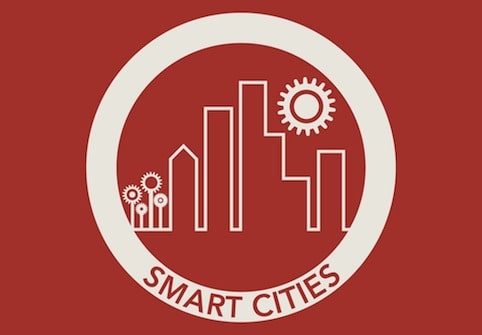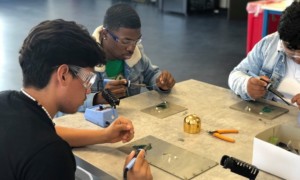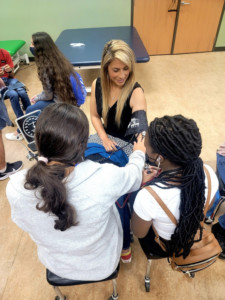Smart Cities: Los Angeles (part 2 of 2)

The first half of this update on LA highlighted the warming EdTech scene and the first Startup Weekend EDU in the City of Angels scheduled for the weekend of January 24th at UCLA Anderson. This post highlights some of the blended developments in LA schools.
Partnership Progress. As featured this week, The Partnership for LA Schools is a collaboration between the mayor’s office, the district, and local foundations serving more than 15,000 students across 17 campuses in Watts, Boyle Heights and South LA. Former Gates Foundation program officer Colleen Oliver is Chief Academic Officer. She outlined Partnership progress:
- Network-wide API (the California school ranking system) growth for 2012-13 was 21 pts (2011-12 was 34 pts) making the Partnership the most improved school system in the state with API gains outpacing all other mid to large schools districts;
- Partnership schools outperformed LAUSD and the state in all 4 content areas on state tests for the second year in a row; and
- Graduation rates improved 9 percentage points (14 points over two years).
“Blended learning continues to be a focus across our network in math/literacy,” said Oliver. Like many districts, the Partnership has made more progress at the elementary level. “ST Math and Achieve3000 are our best programs,” added Oliver, “we are piloting ST Math at one of our high schools this year and continue to work closely with the MIND Research Institute including having a group of our elementary teachers write model lessons for them.”
Russ Altenburg from the Broad Foundation, said, “The Partnership for LA Schools is working with The Learning Accelerator (TLA) to deepen blended learning integration across all schools.” (TLA was a co-author to the Blended Learning Implementation Guide .)
Districts. LAUSD ‘s iPad initiative got some unfavorable press but the first phase–which was better planned than reported–includes 47 pilot schools with lot of professional development and innovative Common Core courses from Pearson. The 28 ELA and math courses include a lot of video and animation and are also being piloted by the Alliance (below) and three small districts in Florida, New York, and the Bay Area. Tom Corcoran, CPRE, is evaluating the deployments and helping the Pearson team gather feedback for the next round of improvements.
Riverside Unified is one of the 20 districts participating in the Gates Foundation Next Generation Systems Initiative. Digital learning leader David Haglund (@Hagdogusc) just left Riverside and is the new deputy superintendent in Santa Ana Unified which effectively closed the achievement gap by moving from 35% proficiency in math to the state average of 67% after introducing ST Math.
Charters. The Alliance for College Ready Public Schools has 10 (of 22) secondary schools using a blended model they call BLAST, a rotation model “in which students rotate between independent online learning, small group direct instruction with a teacher and collaborative group projects facilitated by technology,” said Catherine Suitor. Early test score results at BLAST schools are promising.
All Alliance schools will move to some form of blended learning with the inclusion of iPads for every student to access online Pearson Common Core courses and to prepare for online Common Core assessments. Suitor added that “Alliance is designing personalized blended (online and in person) professional development model to meet specific professional development needs of each teacher.”
Aspire ‘s second blended learning school, Aspire Titan Academy, is using blended to support teachers’ shifts to the Common Core. Teachers are doing shared inquiry with half the class while the other half works on DreamBox and i-Ready. They’ve also built a huge culture of independent reading in the school which has now shifted to online using MyON Reader. Liz.Arney said, “We’re pretty excited about the school and it’s successful conversion has laid the foundation for us to start converting the rest of our LA elementary schools over the next few years.”
PUC is creating an independent study blended learning high school that would use existing facilities and be open on evenings to accommodate students who prefer alternative schedules (i.e., working students, pregnant students, former dropouts). The school would use Summit -style playlists to enable students to complete course requirements at their own pace.
KIPP Empower was a pioneer in the class rotation model (and the first blended KIPP). KIPP LA has expanded use of technology to all 9 schools- 4 elementary and 5 middle- that also benefit from a strategic alliance is with Google. “School technology models differ by school and grade level, ranging from rotational blended learning with Chromebooks and adaptive software to 1:1 computer-to-student models that provide students access to Google Apps for Edu to support digital student portfolios, said Executive Director Marcia Aaron. “This instructional technology empowers teachers with the ability to provide targeted, small group instruction to students on a daily basis that is informed by rich data from formative and summative assessments as well as the adaptive software programs.”
ICEF Public Schools is expanding a successful blended learning pilot program with some grant supported improvement in student and teacher access.
Blended Partnerships. Nonprofit CFY (PowerMyLearning.org) is supporting five blended math pilot sites: Julia Nava Learning Academy (both Art and Business Academies),Valor Academy, Jack H. Skirball Middle School, and Stella Middle Charter Academy.
Seton Partners and Education Elements are working with St. Anne’s Catholic School in Santa Monica to implement blended learning. This is Seton’s fourth blended learning school conversion. Seton and St. Anne’s will be hosting a summit on February 11th focused blended learning in Los Angeles.
There is a Jewish Day Schools event called “Moving the Needle” January 19-21. There are a couple sessions on blended learning. Education Elements is also hosting a March 14 workshop where school and district leaders will experience a personalized learning model from a student perspective.
Next-Gen. Several schools benefit from grants from and affiliation with the Next Generation Learning Challenges :
- Da Vinci Schools operates 3 college-prep high schools and a K-8 at-school/home-school model. The newest high school, Da Vinci Communications (see NGLC profile), combines real world, project-based learning with computer-based instruction. In math, ALEKS is the foundation supporting mixed classrooms where some students are taking Algebra 1, others are taking Geometry, and the most advanced students are taking Algebra 2 as freshmen. In science, students learn basic content through online resources including HippoCampus and spend class time on projects. Last month, Da Vinci Schools hosted a TEDx event where 9th grade students talking about life, love and other stories that matter. The early college model gives students an opportunity to earn up to an Associates Degree with their diploma.
- Last year, Nicole Assisi left Da Vinci to launch Thrive Public Schools which is aiming to open its first blended school in San Diego in either fall 2014 or 2015.
- Incubator School is a new LAUSD school that opened last fall in Playa Vista. The curriculum emphasizes creating new startups and business ventures.
- USC Hybrid High is an NGLC grantee currently serving 9th and 10th grades and the flagship campus of Emagine Public Schools which plans to open two more blended high schools in fall 2015.
EdTech. In addition to the dozen startups mentioned in the last LA post, Russ Altenberg at Broad (and others) mentioned the following noteworthy EdTech efforts.
Revolution Prep provides SAT tutoring and classes. They also provide consumer services and partner with schools.
CollegeSpring helps low income students prepare for the SAT and college. Founder Garrett Neiman was named to the Forbes 30 under 30 this week.
The Tobey Maguire Innovation Fund is in early stages, but is likely to leverage Hollywood to be a catalyst for social change.
QuasarED is adapting DARPA cognitive headset technology (previously used for pilot training and in the medical space) to education applications. It claims to detect cognitive signal differences in students that can serve as a measure of workload and engagement. The company envisions coupling this technology with some type of online tutoring program.
With new blends and more EdTech startups, things are heating up in the City of Angels. Catch Startup Weekend or one of the blended learning workshops.
Curriculum Associates, Dreambox, Educause/NGLC, MIND Research Institute, and Pearson are Getting Smart Advocacy Partners.





0 Comments
Leave a Comment
Your email address will not be published. All fields are required.